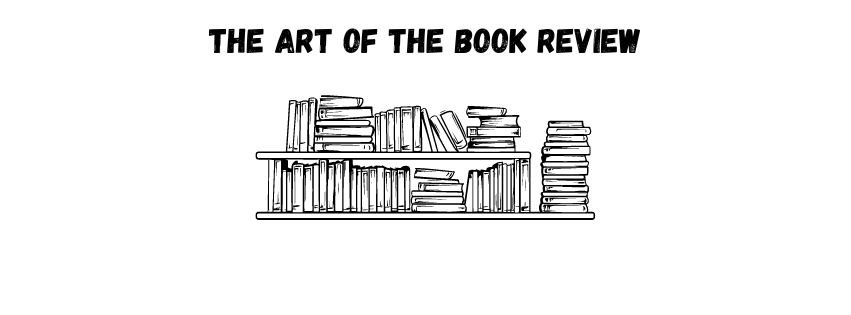
Remember in school when you were occasionally tasked with writing a book report? The main objective of a book report was, it seemed to me at the time, to prove to the teacher that you read the book. It was typically more summary than analysis, although identifying themes might make the report stronger. My mother used to tell us a story—possibly apocryphal—about a book report she once wrote in school on a book that didn’t exist because she had failed to read the assigned book. Summarizing a non-existent plot strikes me as being far more inventive than an actual book report, so good for her. In any case, a book report is not a book review.
A blurb is also not a review. You know those quotes on the book jacket where someone says how wonderful the book is? These endorsements, or “blurbs,” have become a necessity for traditionally published writers, but it’s not clear that they really accomplish anything. They follow a formula, are usually exaggerated, and rarely tell readers anything meaningful about the book. (For my own books, I have expended too much energy and anxiety obtaining blurbs from writers I admire and also have been enormously grateful to them for their kind words.) On the covers of books I read, I sometimes look to see who has written the blurbs, but I don’t rely on them. Do you?
A reader review (on websites like Goodreads or Amazon) is also not a book review. These reader reviews take many forms. Most are just a sentence or two, although some readers write much longer comments. In a reader review, it’s completely appropriate to talk about likes and dislikes, because that may help other readers understand where the reviewer is coming from when they assign a rating (typically one to five stars). A star rating with no comment isn’t of much use to anyone.
And then, finally, there are book reviews for newspapers or magazines. While a certain amount of summary is expected in these professional book reviews, it shouldn’t be overdone (although it often is). In one publication for which I write book reviews, the guidelines specify that a review should be a mix of exposition, analysis, and evaluation, but leaves the proportions to the reviewer depending on the book under review. The balance among the three is where the art comes in.
I enjoy writing book reviews, although they often take a lot of time, especially if the book is at all challenging. In the last few years, I’ve written reviews for a few publications, including the Washington Independent Review of Books, the New York Journal of Books, and the Southern Review of Books. I was previously a member of the National Book Critics Circle, an organization of professional reviewers, but because reviewing is such a small part of my work, I discontinued my membership. Although I am paid for some reviews, it’s never very much. I consider it part of being a good literary citizen.
Three recent reviews I was asked to write posed particular challenges. The Washington Independent Review of Books invited me to review Parade: A Novel by Rachel Cusk. Although I had heard of the English novelist and memoirist, I wasn’t familiar with her work and had no sense of her style. I was intrigued when I learned that the book was about art and artists, because, as I mentioned in my last newsletter, I often find inspiration in paintings and the intersection of fiction and the visual arts. The book could be described as experimental, in that it essentially is plotless and includes explorations of art theory and gender. My review appeared here, a few days after the book was also reviewed in the New York Times, Washington Post, and the Atlantic.
In another case, a publisher,Northwestern University Press, asked if I would be interested in reviewing The Curators by Maggie Nye. Once I learned that the subject matter involved an incident in Atlanta in the early part of the 20th Century, I thought the Southern Review of Books would be a good place for it. It was challenging because the book, which begins with an unusual third person plural point of view, devolves into magical realism—more supernatural than real—that is challenging to follow. My review appeared here.
My most recent review in the New York Journal of Books presented a different sort of challenge. Narrated by a ghost, Briefly, A Delicious Life, by Nell Stevens, also has a supernatural element, but the trick here was discerning fact from fiction. While the ghost is, presumably, fiction, she is observing the brief stay in Mallorca of two real people, Frederic Chopin and George Sand, who really did visit that island in 1838. My review appeared here.
I will continue to review books—I have at least one review lined up for later this year—while plugging away on my own work in progress.
Speaking of my own work, I was delighted to learn last week that my novel, The Last Bird of Paradise, has won an International Impact Award in addition to the Maxy Award it won earlier.



You are indeed a “good literary citizen” Cliff!